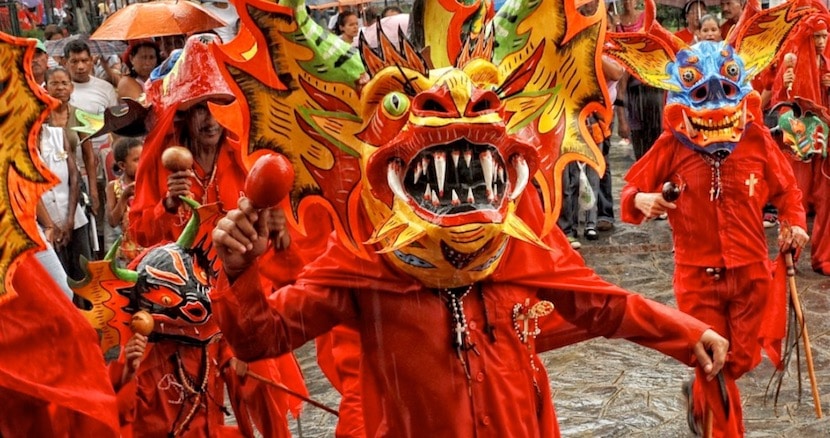
Venezuela is a rich country where three different cultures mix like the Spanish, the indigenous and the African. And proof of this are the great part of customs and traditions of Venezuela that were brought from abroad, especially from Spain and from several African countries. The indigenous culture has also greatly influenced the popular traditions of the country, in fact, currently an important part of the country comes from the different indigenous ethnic groups still existing in Venezuela, where we find the Warao as one of the most representative tribes of the country with the Yanomamis.
Although many people consider customs and traditions alike, it must be taken into account that each one has a different origin. By custom we can consider the practices of Venezuelans who are so rooted that identify them as a people. Most Venezuelan traditions are of European, African and of course indigenous origin. Each area has its own customs, devotion to a saint, popular legends and especially popular festivals are shown.
Instead the Venezuelan traditions They try to maintain the culture inherited from the elders. Traditional cultural manifestations are transmitted from generation to generation which today allows us to enjoy games, meals, sayings, musical instruments, dances as well as a multitude of things that unite us to the past. Within the Venezuelan traditions we can find a good number of these representative of the various states that make up the country. In this article we are going to try to group the most representative ones.
Architecture
Traditional Venezuelan architecture is a combination of the traditional indigenous culture along with the different cultures brought from abroad, as is the case with many other characteristics of the country. The materials used as well as the techniques used are the same as those used by the ancestors, but adapting to the environment and the orthographic changes of the areas where they are installed.
Wood, along with cane and straw are the main materials used by the different tribes of the country to build the towns where they settle and which are found throughout the southeast of the country. In the areas irrigated by rivers, the floating houses that are built on the coast of the rivers are called stilt houses and are built with the same materials as in the past.
In the mountain areas, the houses are no longer a mere roof where to shelter to cbecome real homes and where we find a central patio, a corridor with connecting the different rooms and a hallway. The problem with this type of construction in the mountains is the limitations imposed by the terrain where they are located.
Traditional songs
Depending on the different areas of the country that we visit, be it the Andes, the coast, the jungles or the plains, and depending on the time of day, we can find out how the inhabitants can hum different songs. The typical traditional songs show the experiences that accompany the inhabitants on a daily basis. These songs were created as a rhythmic song that accompanies the daily tasks of the men and women who perform daily in the field. These songs derive from the colonial era in which black slaves were used in the fields and they used these songs to express their sorrows, joys, experiences ...
Santa Ana hammocks
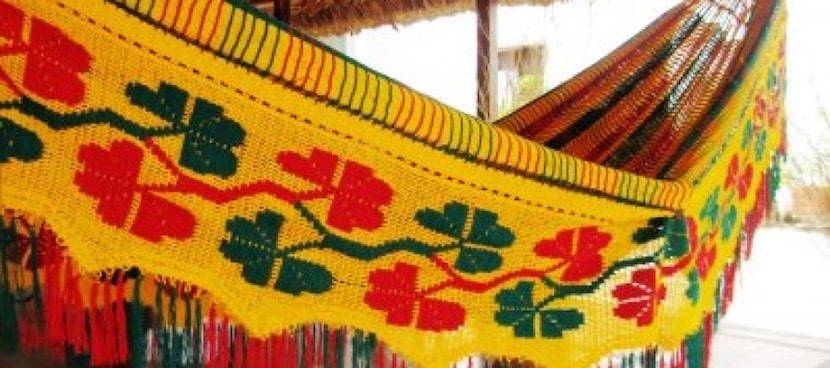
A chinchorro is the typical net that hangs from both ends to sleep or rest for hours, also known as hammocks. It is made with moriche thread, widely used to make various typical handicraft products of the country. The first chicharros were manufactured like the current ones, passing three strands around two sticks stuck in the ground to be able to weave the meshes and to be able to link them in a knot and to make them the desired size.
Venezuelan traditional dances
The large number of traditional dances existing in Venezuela result from the interaction of the European heritage, especially the Spanish, with the indigenous and, to a lesser extent, by the African. Each dance has its own characteristics but all of them they still preserve the essence of the Venezuelan mestizo, believer and cheerful. The most representative Venezuelan traditional dances in the country are the Sebucán or Palo de Cinta, the Turas and the Maremare.
The Sebucán or Palo of ribbons of European origin consists of dancing around a tree, especially with the rituals that celebrate the arrival of spring. Las Turas is a typical magical religious dance of indigenous origin that is celebrated at the end of September to thank nature for the benefits received as long as the harvest has been abundant. Finally we find the Maremare dance in honor of the deceased. The lyrics of these dances are improvised and the dance consists of taking steps forwards and backwards.
Dancing devils
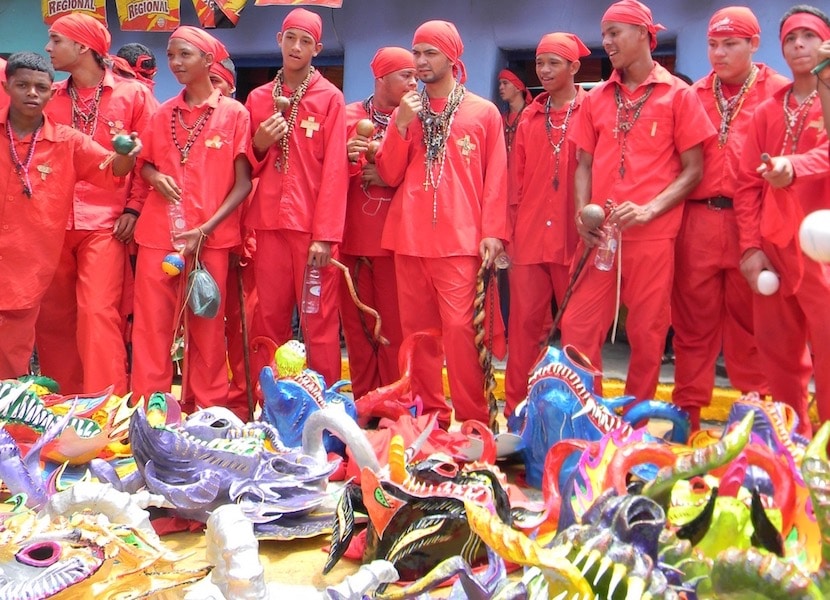
Every year in the celebration of Corpus Christi, where the religious and magical beliefs of good over evil are reaffirmed, a ritual dance is held, starring the dancing Devils in different areas of the country. Devils represent Lucifer wearing colorful clothing and a mask that represents the intention to surrender to the most holy sacrament.
The devils are grouped in collectives or societies, they carry crosses, rosaries or any religious amulet and during the festival they pray prayers, including a mass. They wear red pants, shirt and cape and also they wear bells and rattles hanging from their clothes. The masks are designed with bold colors and fierce looks, or at least that's what they are trying to do. The devil costume is made up of various accessories such as the tail, the cowbells, the errand and the maraca. Being a very popular tradition throughout the country, we can find different dancing devils distributed throughout the country, but the most important are those of Yare, Naiguatá and Chuao.
Burial of the Sardine, another of the traditions of Venezuela
As in Spain, the burial of the sardine is the popular manifestation that closes the cycle of the Carnival festivities and guarantees that it will be celebrated again the following year. The Carnival festival is associated with the custom of training a pork rib, which is called a sardine and which symbolizes the prohibition of eating meat during the days of Lent. Formerly it was believed that this gesture was to attract good fishing and fertility in the animals that would ensure food for the future.
The procession of the burial of the sardine is led by the prosecutor who is in charge of clearing the streets through which the burial of the sardine will pass, followed by an altar boy and a priest who is followed by a funeral procession made up of a carriage decorated with different offerings. of flowers. Inside the float the figure of the sardine is represented.
Saint John festivity
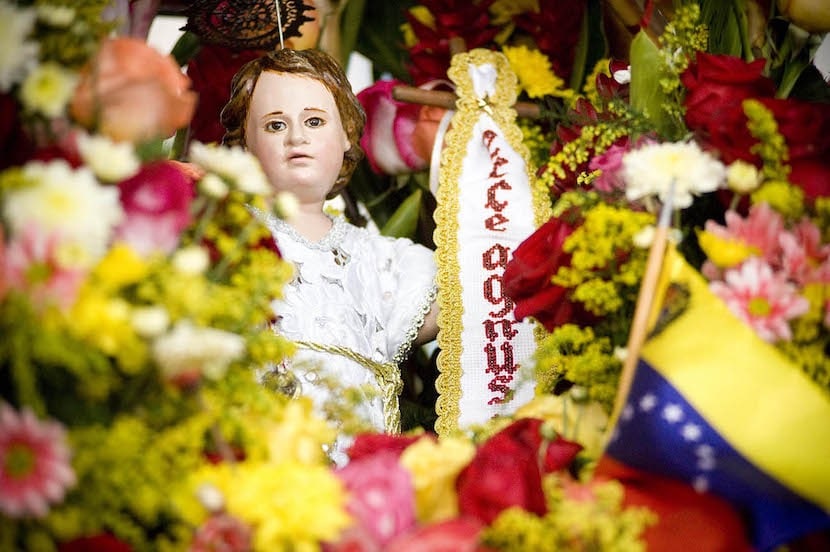
It is celebrated as in Spain on June 24 and celebrate the birth of the saint. This celebration brings together a large number of believers and devotees in the states where it is celebrated, since it is not celebrated equally in all the states of Venezuela. On June 24 in the early morning, the saint is prepared to leave the house where he is located to the church accompanied by the most devout ones and thus upon arrival a mass is celebrated that begins to replicate drums that go through the whole town, together with the saint who is receiving the gratitude of the believers as he passes.
Caracas stoves
The traditional Venezuelan cuisine was not born to the heat of great chefs, nor cooks of great restaurants, the typical Caracas cuisine He was born in the home of Venezuelans, the result of his work and passion for cooking and for trying to get the most out of the food they got from both the fields and animals. When women began to take charge of the kitchen, Caracas food began with the production of desserts and sweets, especially when the servants were in charge of making the food, to try to satisfy the patrons.
Like other Venezuelan traditions, Venezuelan food it is very influenced by the Spanish, Africans and in this case also indigenous. Typical Venezuelan dishes are corn sands, black sado, aubergine cake ...
The San Sebastián Fair
The San Sebastián International Fair is one of the most important Venezuelan traditions in the country. It is celebrated in the city of San Cristóbal, located in the state of Táchira, in the second half of January. Also known as the Bullfighting Fair of Venezuela It is the ideal setting for the country's bullfighting lovers to enjoy the great bullfighters worldwide.
This fair attracts a large number of foreign visitors and is an experience that offers great entertainment possibilities in the state of Táchira as in the entire country, since in addition to internationally renowned bullfighters, great professionals of the country also attend the fair, which are not few.
Papelones from Tacarigua
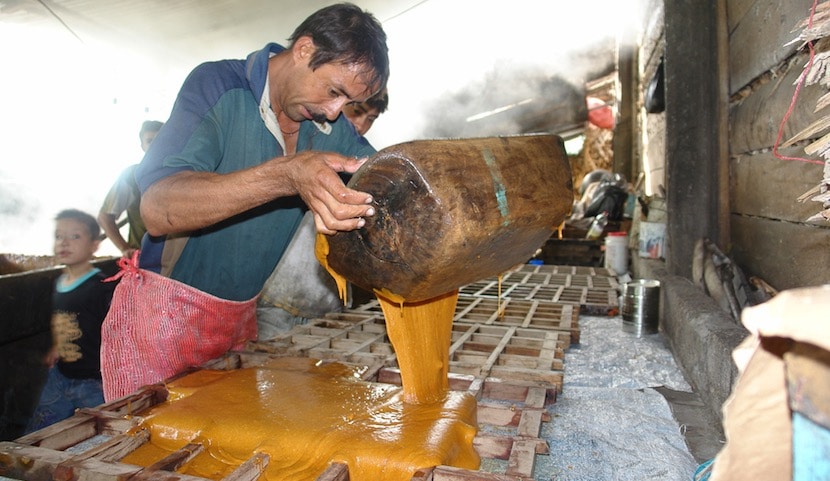
Tacarigua is made up of fishing and agricultural communities located on the island of Margarita. For many years they have been making the newsprint for internal use and to sell to other communities. The papelón comes from sugar cane has a conical shape, measures about 20 centimeters high and a base of 10 to 15 centimeters. It is generally used to sweeten chocolate or coffee, to make sewn or raw guarapos with lemon.
Passion of Christ
With the arrival of Holy Week, as in Spain, parishioners go to churches to make offerings and acts to remember the act that the son of God performed for all men. But in Venezuela, there is also a public representation that stages the last days of Christ on earth. In these representations we can see the Passion and Death of Christ, made up of 15 scenes that tell the story of Jesus Christ.
However not only is the Passion and Death of Christ represented, but also scenes of the entry of Christ into Jerusalem, the multiplication of the loaves, the Holy Supper, the garden of olives, the Via Crucis, the Resurrection, the crucifixion are represented.
Burning of Judas
The burning of Judas is one of the traditions of Venezuela that represents the society's dissatisfaction with political events as well as their behavior in general, but it also serves to end Lent by preparing his resurrection for next year. The reason for these burns is to remember Judas's betrayal of Christ, alluding to the character's betrayal of his people. The Judas doll that burns is made of cloth, old reds and rags, filled with fireworks, which are lit when the doll is hanged and burned.
Bud hats
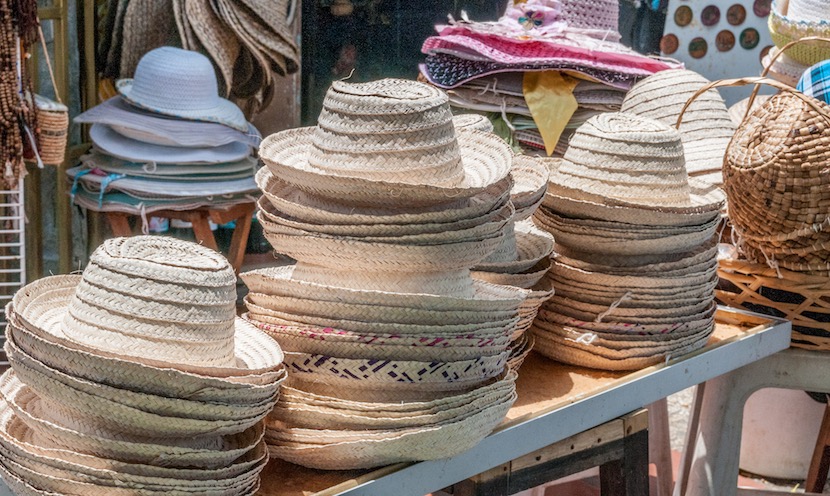
Bud hats are the Margarita Island's main source of income. Despite its simple appearance, the manual manufacture of these hats is not easy at all and requires a lot of skill to be able to make them. This type of hat had for a long time great acceptance in the country and in the Caribbean islands, but in recent years production has been reduced a little, adapting to current needs. In addition to hats with the buds, they also make bags, rugs, caps ...
Tobacco and calillas
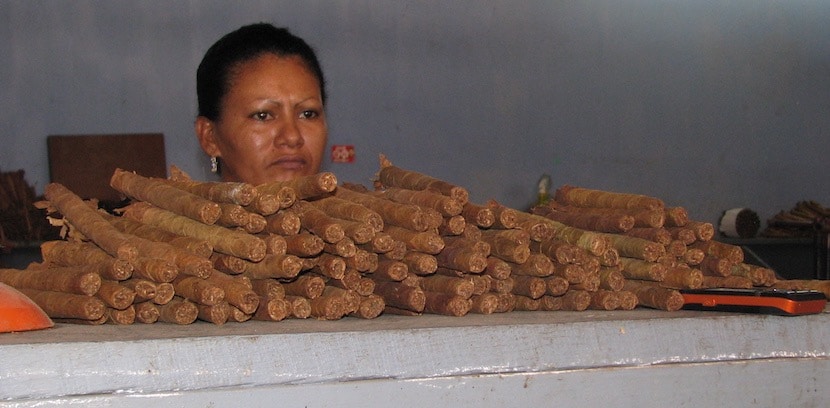
The art of growing and making tobacco is preserved as one of the Venezuelan family traditions, although in recent years other more economically productive activities are making it tobacco production takes a back seat. Tobacco production is divided into Calilla, to make a slim cigar of selected material. On the other hand we have Tobacco, which is aimed at production in large quantities and on a regular basis. Formerly, tobacco was sold throughout the country, but due to the reduction in the reduction, it is currently only consumed in the State and the community of Los Millanes where most of the cultivation of this plant is found.
Venezuelan artisan traditions
Among the traditional handicraft products that are manufactured in Venezuela we can find decorative elements, food, drinks, ceramics, Caesarias, liquors, stationery, paintings, fabrics, shoes, clothing, goldsmiths, ornaments, wooden objects, hammocks, hammocks ... These Artisan expressions allow the inhabitants to show the way of life and soul of Venezuelans.
Christmas traditions of Venezuela
Being a deeply religious people, with the arrival of Christmas, one of the Venezuelan traditions is that every corner of Venezuela prepares for the arrival of the baby Jesus. At the beginning of December, the joy of the dates that are approaching is beginning to be seen and meetings, toasts, celebrations to celebrate the arrival of the baby Jesus to every corner of the country are becoming more and more common. But in addition we also find other manifestations that in coscones can extend the celebration of Christmas until February, such as the Christmas bonuses, the manger, the bagpipes, the Christmas Christmas Masses, the parades, the skateboards, the shepherds' dances, the day of the Holy Innocents, the arrival of the Magi, the new year, the old year ...
We hope you liked all these Venezuelan traditions although if you have been wanting more, here you can read what the customs in Venezuela more typical.
I love my country Venezuela, it is beautiful, we do not have to envy any country for anything, because it has everything, landscapes, beaches, mountains, rivers, etc. I love my country, I do not change it for anything, I love its traditions and customs
This is the land that produces milk and honey! Amen ...
Q desiccation horrible disgust pure politics very ugly
Hello from Táchira, areas of beautiful stops, they are for me the top of the sky that is why it is beautiful, my Venezuela, we do not have to envy any country for anything, because it has everything, landscapes, beaches, mountains, rivers, etc. I love my country, I do not change it for anything, I love its traditions and customs. From La Grita.
Hello from Mamporal Venezuela is a very large country and many cultures have many things that I and we can all enjoy and those things are rivers, beaches, parks, mountains and many more things Venezuela has its flag, its anthem and of course a homeland already a that in Venezuela you cannot get food and you only hear pure robbery on the news, little by little my country is going to change I know and not backwards but forwards and for that alone I would not change, not even for gold to Venezuela.
Venezuela is a very large country and many cultures have many things that I and we can all enjoy and those things are rivers, beaches, parks, mountains and many more things Venezuela has its flag, its anthem and of course a homeland already in Venezuela You can't get food and you only hear pure theft on the news, little by little my country is going to change I know and not backwards but forwards and for that alone I would not change, not even for gold to Venezuela. They are for me the top of the sky that is why it is beautiful, my Venezuela, we do not have to envy any country for anything, because it has everything, landscapes, beaches, mountains, rivers, etc. I love my country, I do not change it for anything, I love its traditions and customs. From La Grita. I love my country, Venezuela, it is beautiful, we do not have to envy any country for anything, because it has everything, landscapes, beaches, mountains, rivers, etc. I love my country, I do not change it for anything, I love its traditions and customs
My country is the best, it has the best customs and traditions
Hi, I'm Verónica Jaramillo and I'm Tigres. I love this training, I hope all the pages were like that with a lot of concept.
I'm Christian
Thanks for putting this page
Despite the circumstances that we live in, Venezuela is the best country .. I love it and will continue here .. its customs and traditions .. I am Andean and there are no people as good and hard-working as the Gochos
Hi, I'm looking for a girlfriend, say 33
THIS NETWORK IS VERY COOL TO SEE A LITTLE MORE OF VENEZUELA AND ITS TRADITIONS
I love my country, it is the best in the world and although at this time we are not so well, I know that Venezuelans are going to leave this country… I am with my country…. We are a warrior people and we are going to defend it at all costs….
shellfish
very good but a recommendation is not the papelones de Tacarigua, that image is from the Quebrada Negra village belonging to the Seboruco municipality, Tachira State
I loved this article .... it is very good and of course I adore it. I congratulate you .... # amovenezuela